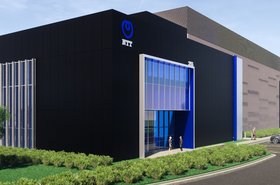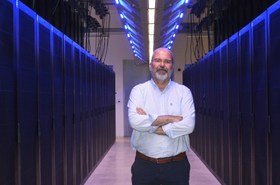The radio access network (RAN) is the technology that provides the connection between devices and the core network. That’s important for the Edge, because flagship Edge applications like the Internet of Things connect up using cellular radio networks.
RAN has come to the fore now, because mobile networks are on the brink of a major upgrade. They are moving to 5G - and Edge players need them to make that move. But that upgrade will be costly - and RAN components are the most expensive part of a telco network.
Operators want a way to upgrade their systems and minimize cost - and the way out looks like using a more open approach than the traditional legacy end-to-end integrated RAN systems they have been tied to till now.
“Legacy RAN solutions are notoriously restrictive, as major components of a RAN must come from the same vendor’s system,” says Tuan Phan, partner at Zero Friction, and member of the Emerging Trends Working Group at IT governance group ISACA. “This vendor lock-in constrains feature delivery, stifles innovation, limits efficiency and inflates costs.”
The industry has an initiative aiming to help break operators free of RAN lock-in: OpenRAN. First, the RAN stack is virtualized, making a virtual RAN or V-RAN. Then open interfaces are created that allow for interoperability, so telcos can in theory adopt a best-of-breed approach to designing their networks; selecting better components at better price points, rather than being compelled to buy the whole system from a very select number of end-to-end providers.
“We cannot sustain technology innovation without ensuring interoperability between designs. No single company can be good at everything,” says Phan. “The OpenRAN approach allows the telcos to address 5G demand by leveraging an ecosystem of vendors that collaborate using the same standards using the benefits of cloud-based architecture. The bottom line is that the telcos can get to the 5G market quicker, achieve scaling at a significantly incrementally smaller cost basis, and reduce their supply and implementation risks.”
Operators and governments are keen to open up the supply chain ecosystem in the telecoms space so a large number of vendors can offer better quality components at better prices. Operators want this for the cost benefits. Governments want to address national security concerns: closed mobile networks can become tied to a single company. In the case of Huawei, that raises suspicions.
But while the technology is progressing, government intervention needs to be more proactive than simply banning unwanted vendors.
This article appeared in our Edge Supplement. Read the whole thing here
OpenRAN needs a change of mindset
In the OpenRAN space, Mavenir, Parallel Wireless and Altiostar Networks have found success, while mainstream players like HPE and Dell are moving to provide commodity hardware to run the virtualized RANs.
In that respect, diversification efforts have had some impact, and the next twelve months will be interesting if other players like NEC, Samsung, and Fujitsu make a concerted effort to move into Europe, says Paul Graham, Partner for Technology, Media And Telecommunications at the law firm, Fieldfisher.
“People are finding these niches, and now they can do a whole range of them because they’re not trying to balance R&D teams,” says Paul Rhodes, OpenRAN and 5G Principal Consultant at systems integrator World Wide Technology (WWT).
He thinks OpenRAN gives new companies an opportunity, and improves product quality: “In an end-to-end approach there are some rubbish products, but poor value lower grade products get weeded out in OpenRAN. They simply won't survive.”
However, even if there is more choice on the market, operators might still have a limit in terms of how many vendors they are willing to deploy on any one network, partly for pragmatic reasons of managing complexity.
“Bear in mind that most operators like to have a primary source and a secondary source,” BT’s CTO Howard Watson, said earlier in the year. “It's unlikely that all of us will start deploying equipment from four or five different vendors because the operational challenge of the person in the van maintaining that tends to limit you to a choice of two."
Working with an installed base makes it harder, says Prakash Sangam, founder and principal at Tantra Analyst. Operators such as Verizon, AT&T and T-Mobile will find complex brownfield sites more of a challenge than greenfield deployments.
“The biggest challenge for them is lack of a ‘single throat to choke,’ in this architecture,” he says. “They have gotten accustomed to dealing with a single vendor for the whole system for integration, troubleshooting and others, for decades. It’s hard to change that very quickly.”
At the same time, the switch to open standards could help large players to consolidate. Incumbent vendors could lose market share in some areas, because operators can pick and choose components, but if products are more interoperable, they will find it easier to buy rival products and integrate them into existing offerings - even if the ecosystem gets too large to own.
“They may have the balance sheet to actually swallow some of these larger companies, and perhaps take out a part of the ecosystem that's doing particularly well,” says WWT’s Rhodes.
“I don't think they're going to be taking out HPE or Dell, but because they are moving to a V-RAN architecture, almost anybody in the OpenRAN ecosystem would be a wise buy for them.”
“Are there going to be some good ripe targets for acquisition? Absolutely,” adds Kalyan Sundhar, VP & GM of 5G Edge To Core Products at Keysight Technologies, a test and measurement company. “They might gobble some up, but I think the ecosystem is quite vast right now and it's not going to be easy to just take a few and then you're done and it’s a closed thing again. I think it's just too wide of a market with too many players.”
Huawei bans could help or hinder OpenRAN adoption
Amid increasing global tension, the role that large Chinese vendors play in critical telecoms infrastructure in many countries has led to concern.
And while these fears highlight the need for greater plurality of choice when it comes to hardware, direct intervention to remove certain players from the market might not naturally create a wider ecosystem to fill the void.
In the UK, several years of reviews into supply chain diversification and the reliance on ‘high-risk vendors’ such as Huawei and ZTE culminated in the UK Government banning UK telecoms operators from using such equipment.
“About a year ago, we were saying no involvement in the core network and only 35 percent in the rest of the network,” says Fieldfisher’s Graham. “That’s changed and the operators have to strip Huawei equipment out of the core network by 2023 and the entire network by 2027.”
However, stripping out Huawei from a network might not help OpenRAN providers, because the bans may have come too soon for OpenRAN to be a ready-made replacement.
“In terms of macro RAN equipment, there are essentially two viable infrastructure vendors in the UK - Nokia, and Ericsson,” explains Graham. “A lot of the operators have got other things to think about. Instead of OpenRAN technology, they've got this massive redeployment exercise to do by 2027. That's imposed a quite significant cost on the operators that they've got to wear over the next five to six years.”
The need to switch out now-verboten hardware has highlighted the need for a broader supply chain and ecosystem, but the urgent timescale means operators can’t wait for OpenRAN technology to mature, and could risk deploying it in dense urban environments too soon.
“Rip-and-replace directives from several Western governments have certainly highlighted just how little competition there is in the mobile network infrastructure market and the need to diversify the supply chain,” says John Baker, SVP Business Development, Mavenir. “The deadlines imposed in some of those directives may have the unintended consequence of forcing some operators to turn to the incumbent duopoly rather than taking advantage of the improved flexibility and versatility of OpenRAN.”
However, it’s not all bad news. Keysight’s Sundhar says that Nokia and Ericsson’s proprietary systems may pick up some business Huawei loses through these rip-and-replace directives, but the move will create opportunities for other open providers.
“It’s not all Huawei losing business and Ericsson, Nokia, and Samsung gaining everywhere,” he says. “It's also left the door open for the movement into OpenRAN.”
Government needs to understand and support OpenRAN
Given the critical nature of telecoms infrastructure, and the incredibly expensive nature of its roll-out, governments could have a massive role in the fate of OpenRAN. Amid those mandated bans of certain providers, Governments should look to create an environment where operators can test and develop OpenRAN deployments with little cost or risk, or face more potential consolidation in the market.
While the OpenRAN technology is still maturing, especially around areas such as performance and much-needed interoperability, governments should consider providing operators more in the way of sandboxes and trial locations so they can have a way to validate results.
“What the operators want is for the government to fund testbed trials,” says Fieldfisher’s Graham, "so that this new technology can be properly tested.
“You want the funding to be in place, and the right sort of commercial incentives, and then really you want the government to step away. You don't want them that heavily involved in any strategy decisions about betting on a particular type of technology.”
Keysight’s Sundhar says the fact that there are so many players entering the space creates many variables around performance and interoperability, and so test & validation centers are required so operators can understand how vendors’ components might work together in a real-world setting.
“There is now a necessity for having the certified test centers, and they cannot be driven just by network equipment vendor,” he says. “Those give you an early certification that you are able to mix and match pieces and they are able to work with the rest of these particular components, that gives the operators a verdict that yes, collectively, these four or five things can work together.”
In February, Germany allocated over €300 million for the development of OpenRAN technology as part of its €130 billion post-Covid stimulus package, while the UK Government recently launched a SmartRAN Open Network Interoperability Centre (SONIC) to allow existing and emerging suppliers to ‘come together to test and demonstrate interoperable solutions.’
“With the first vendors on board and more expected to follow, this is an exciting step in the journey of the SONIC project,” said Simon Saunders, director of emerging and online technology at Ofcom. “SONIC offers a unique opportunity to shape what the UK’s supply chains of the future could look like and support innovation. So we encourage companies across the telecoms industry to express their interest in participating, as we get set for the project to go live in May.”
Similar efforts are going on in the US. In November 2020, the US House approved a bill to provide $750 million of Federal funding grants to support OpenRAN 5G deployments in the United States. In February, the FCC said it was starting an inquiry on whether to develop a policy on OpenRAN and how it can support development and deployment of the technology in the US.
“OpenRAN has emerged as one promising path to drive 5G security and innovation in the United States,” said FCC acting chairwoman Jessica Rosenworcel. “With this inquiry, we will start to compile a record about how we can secure our vulnerable supply chains once and for all, and revitalize the nation’s 5G leadership and innovation.”
If this goes international, then things look promising, says WWT’s Rhodes. “That really is going to be the icing on the cake that then encourages other countries to start going. If the right incentives come and they align between UK and Germany for example, then we could see something with the first commercial OpenRAN deployments happening this year.”
For a movement based around the word “open," the politics can look pretty opaque. But the Edge simply won’t reach its full potential without some coherent approach to opening up radio access networks.
This article appeared in Issue 41 of the DCD>Magazine. Subscribe for free today







